India is not an easy country to visit. It’s a land with some of the most beautiful buildings in the world, yet its towns and cities can be eyesores. It’s rich in magical experiences but awash with the most terrible poverty. It fascinates and appals at the same time.
No wonder I approached our two weeks in Delhi and Rajasthan with the sort of trepidation that I’d not experienced with other holidays. I was worried about the impact it would have on my stomach, my senses and my emotions. Would it overwhelm me? Would all the horror stories turn out to be just that – stories?
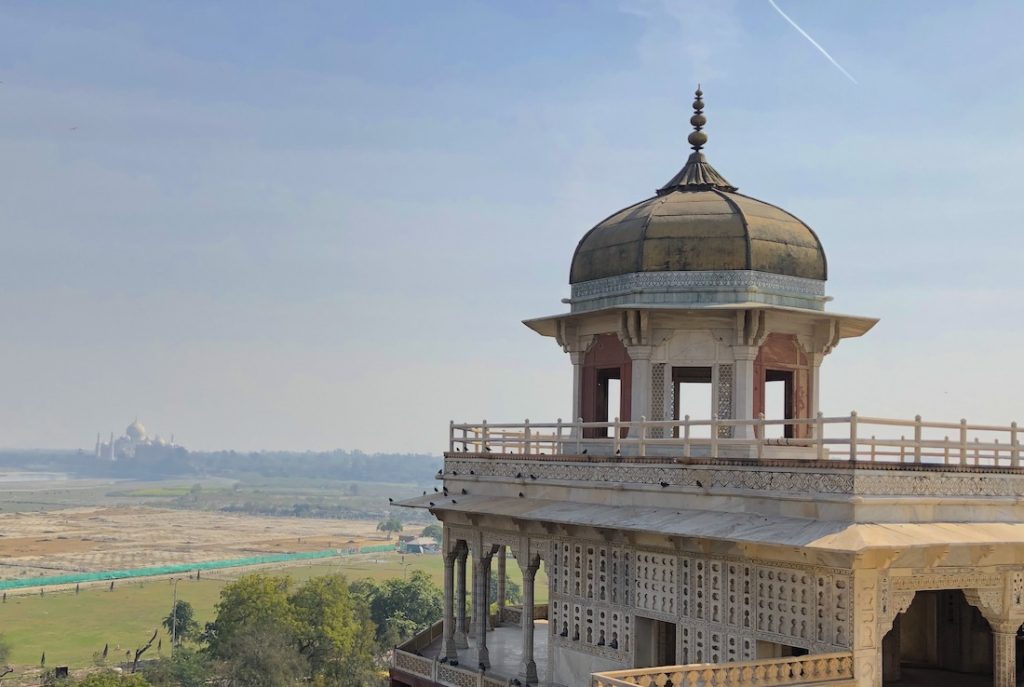
Even before departure India’s fabled bureaucracy and our desire to protect ourselves from the worst had taken their toll. We needed an e-visa, which had more questions than a pub quiz; jabs to protect us from various ills; an expensive box full of lotions, potions and pills in case we succumbed. Booking seats on the train from Delhi to Agra proved to be a particularly tedious and frustrating task thanks to the ropey IT and unnecessary complexity of Indian Rail’s website, but having failed to master it we were delighted to discover the much simpler 12go website. And then came the restrictions – the fact we couldn’t take Indian Rupees into the country or buy a local SIM card for our mobiles without having to present passport, photos, and documentation at a mobile phone store to prove our residence in the country. The latter process was at least eased by the hotel doing it for us but it still took more than 24 hours to complete. And even then the SIM didn’t work because my mobile was locked to Vodafone back in the UK. Isn’t life too short for all this nonsense?
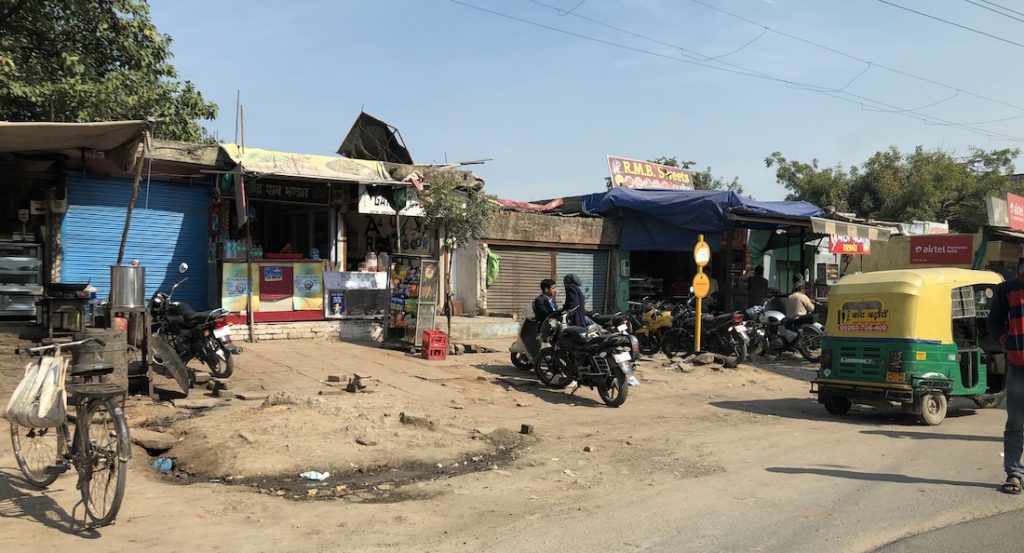
We got off to a bad start in Delhi, finding the city shut for the Republic Day parade, and the moment we stepped outside our hotel we became the target of the country’s notorious touts and scammers. As we found in Luxor, Egypt, so many years ago, these guys have a habit of sticking to you like leeches and are oblivious to the word ‘no’. They were at their worst in Delhi and Agra, an annoyance in Udaipur but barely noticeable in Jodhpur, and they invariably trotted out very similar stories (‘I’m a waiter at your hotel’ or ‘My cousin works in a tailor’s in London’) in their quest to relieve us of money. The tragedy of it is they ended up making me suspicious of anyone local and their motives, which is not what travel should be about. By the end of the holiday, we’d just about mastered how to deal with them.
Travelling between the cities can be challenging and there were times when I thought we would’ve been better off on an organised tour. Lugging large cases in and out of stations, down pot-holed streets full of zillions of people, dodging touts at airport car parks and putting up with train delays was tough on the mind and body. Ever since we took an organised tour of Jordan we’ve been champions of doing things independently but if we did busy India again, I’d have to rethink. Even so, the air and rail network is efficient and tickets are astonishingly cheap for what you get. Hiring a driver to take us from Jodhpur to Udaipur was inexpensive, allowed us to see the country in a different way and to stop off at the spectacular Ranakpur Temple. Getting around the cities was easy and cheap, thanks to Uber and the squadrons of bone-shaking but hilarious tuk tuks.
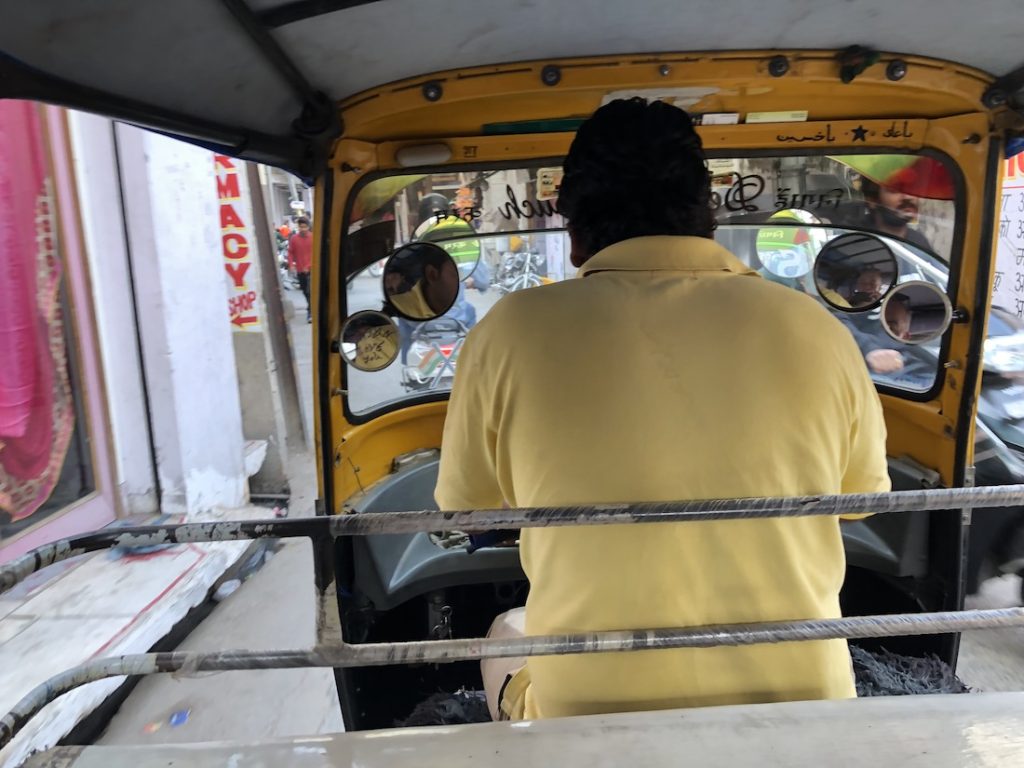
With all those options, there was no need to hire a car. Not that my nerves would’ve coped with driving in India if we had… I lost count of the times we found people driving the wrong way up the carriageway, in towns and on motorways, or taking a novel route round a roundabout. I discovered that lorry drivers follow an entirely different set of road rules to everyone else and that patience is in short supply. Nobody likes to queue in an orderly fashion or is willing to wait patiently at traffic lights. At one point in Delhi we went ploughing through three lanes of traffic coming from the left and right because our taxi driver missed the red signal, speeding along in a mind of his own. How we didn’t get sliced in half I’ll never know…
Sitting in the back seat of those cars and watching the world go by, India isn’t always a pretty sight. It may be growing rapidly and earning lots of money but it has terrible poverty and inequality, disabled people huddling in rags on pavements begging for a few pennies, people living in impromptu shacks made out of junk beside roads and rail tracks. India is a country with stunning landscapes and mind-blowing buildings yet it’s a country that’s sitting on various environmental time bombs. The filthy brown air being pumped from industrial estates is disturbing and the amount of litter horrifying. Much of it plastic, the earth must be thick with toxins in so many places.

Towns and cities look as if they’ve been painted in a thick layer of dust, metal panels rust, concrete crumbles and roofs leak. In fact, much looks as if it’s on the verge of collapse. Yet there are signs of the new India with modern apartment blocks rising high above the old streets, shiny car showrooms packed with expensive German cars, fancy homewares boutiques, modern airports, hi-tech HQs and smart new hotels.
There is life and colour in Indian towns and cities, so much so that I could’ve spent hours by the side of the road watching everyday life in full flow. Lives are lived on the streets (at least outside of the monsoon), trading is a way of life, things are constantly reused and reinvented, food stalls do a roaring trade and brightly coloured materials hang from shopfronts. High Streets in our towns back home in the UK may be dying but there’s no such problem in India. Animals are as common as people too. The ever-present cattle amble down streets and motorways, oblivious to the dangers, shitting everywhere and munching on piles of rubbish and discarded food. Stray dogs are as numerous as the stray cats of Istanbul. Monkeys hang around railway platforms and miniature birds dart between the trees. Above the streets dangle a worrying network of thrown together cables and wires, perhaps the only thing India has in common with Japan.
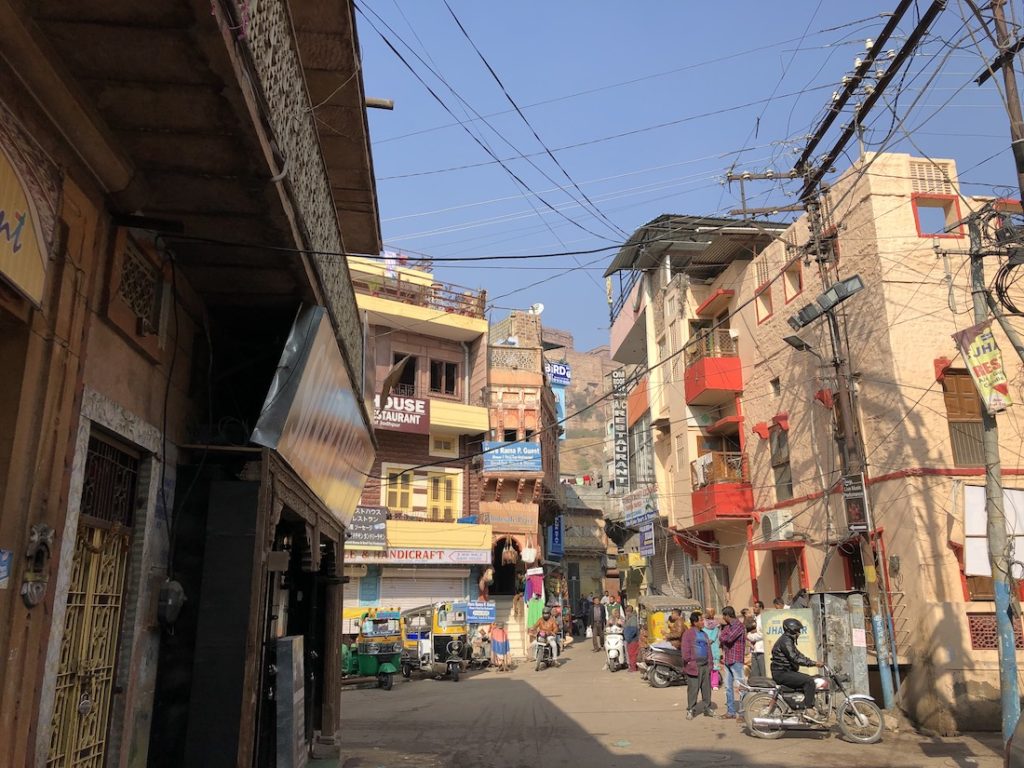
Reading this, it would be easy to conclude that I struggled to get on with India but it didn’t take long for me to fall for its charms. Even the chaotic, filthy streets of Old Delhi are fascinating and the frenetic pace I found strangely reviving. The people watching is addictive and the people themselves friendly and curious. The historic buildings, the tombs, the palaces and the forts are among the best in the world and full of artistry, colour and magic. The sheer, awesome talent of the men and women who built and furnished them is beyond question. The empires that conquered India and the people who settled the land, such as the Mughals 500 years or so ago, created wonders that put to shame much of what was being built in Britain at the time. The Taj Mahal, the Qutb Minar, Agra Fort and so on are remarkable survivors and should be on every bucket list.
As for stops, Jodhpur was my favourite, not as touristy or as overwhelming as Delhi or Agra. Friendly and welcoming, there was just enough to see and do and even our tuk tuk driver was a charmer. It also had the best restaurant of our stay, called Indique, on the rooftop of our accommodation, the historic and beautiful Pal Haveli. It wasn’t particularly fancy but served good and hearty fare, traditional, full of flavour and punch. Washed down with a cold Kingfisher, it was superb and the views of the monumental city fort were unbeatable.
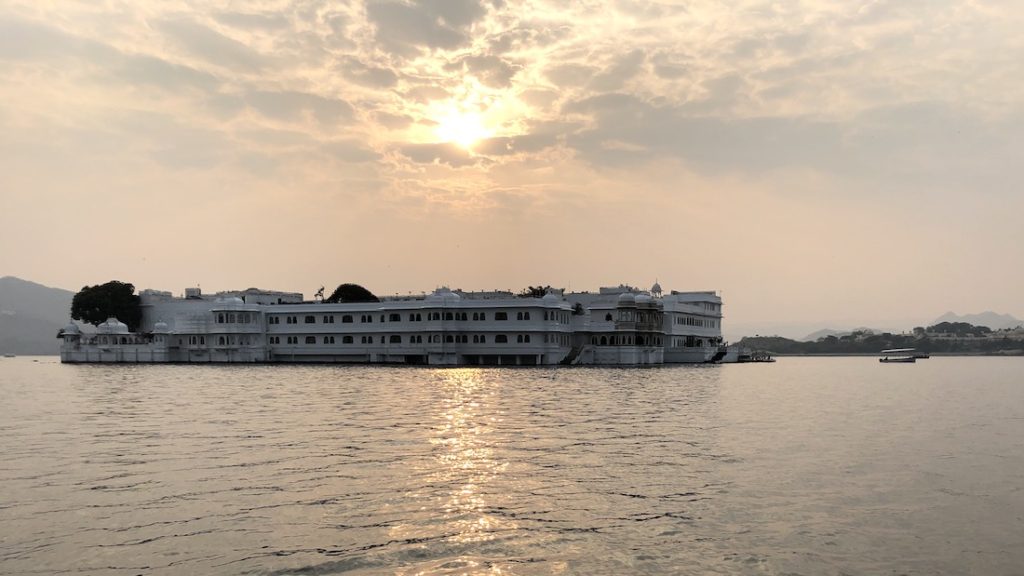
But in terms of romance, Udaipur came out top of my list. Lit up at night, its historic palaces and mansions looked magnificent, while the sunsets over Lake Pichola were glorious. It may have been more touristy but it was the perfect place to complete our stay and bid goodbye to India.
Will we return? India is such a vast country and there’s so much more I’d love to see, including the relaxing waterways of Kerala in the far south and the cool Himalayan hill stations in the north. We’ll just have to add them to the list.

